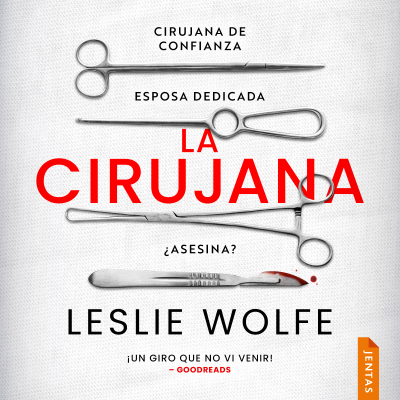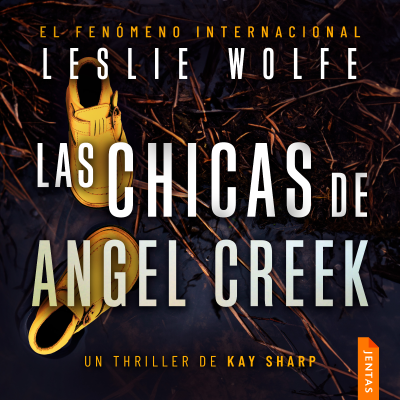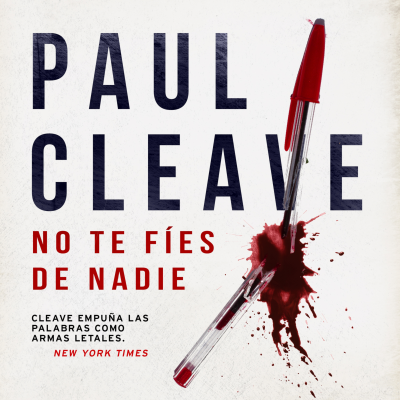
Disfruta 30 días gratis
9,99 € / mes después de la prueba.Cancela cuando quieras.
Todos los episodios
20 episodiosBuilding Raised Garden Beds Welcome back to another episode of the homegrown liberty podcast! I’ve been hard at work with Catie and the boys cutting down trees, mulching brush and limbs and clearing for the new garden space. I took some video of the area before we started clearing, and pretty soon I’ll have it cleaned up. Then we’ll be filming the brand new garden beds going into their new home! I’m excited to have a new garden setup so close to the house and I’m looking forwards to showing you guys some different methods and techniques. I’ll be looking for some feedback on what you think we should do with the garden layout. But let’s get to the…. Question of the Week From Dillon Nick, Over the years, have you made any significant modifications to your “7-layer cake” approach to building beds using wetted cardboard compost dried molasses inoculants amendments (e.g., blood & bone) mulch I recently moved and need to build some new beds. I also have a U-haul store’s worth of cardboard boxes at my disposal and a wet Mississippi winter to get these things built and primed for spring planting. Thanks, Dillon Thanks for the question and it’s a timely one seeing as how I’m in the process of building a completely new garden space. The process you described above is closer to what I like to do for more of a broad area soil enrichment right before sheet mulching. This is what we did at Jack’s place to help build soil and make a lower pH zone for root development above the limestone slab that sits a couple inches below his soil surface. While not a bad method for starting a new garden space, not exactly what I prescribe for gardening. For my raised beds this year I’ll be essentially doing what I describe in Episode 25 of my podcast titled “Expanding Your Garden”. http://www.homegrownliberty.com/e0025-expanding-garden/If you follow those directions you should be well on your way to having some great soil. With that said, I’m going to be building some of my raised beds with wooden sides and set level and off contour so I can create a more flat, terraced garden space. The main reasons for this departure from my curving contour based earlier garden beds are twofold. I want to build raised beds with hardware attachment options so I can standardize on sizing for row covers and season extension. I’m setting up beds on a standard unit of 4’ wide by 8’ long. This way I can construct chicken tractors to work only a small section of garden bed, or place a similarly sized hoop structure and have a modular and standardized growing space. The other major factor is that my wife likes those straight lines, she wants it to be neat and ordered. And like I always say, “happy wife, happy life”. So I’m making straight line garden beds to make my wife happy and to make my life easier when it comes to modular gardening attachments for the raised beds. I’ll go into my raised garden prep ideas briefly here but if you want a write up that’s more thorough, check out episode 25 and also episode 46. http://www.homegrownliberty.com/4-steps-building-healthy-soil/ Basically all I do is this. If you have established turf or grasses, there are a couple ways to deal with it. The best in my opinion is to solarize with clear plastic to kill the grass, roots, and weed seeds. Second best would be to flip the turf upside down and proceed, or lay down a couple layers of wet cardboard as a weed barrier. Side note, if you go with the cardboard option, you’ll need to either import more compost to make a deeper layer of growing space above the cardboard, or you’ll need to expose the cardboard, and plant your transplants into soil under the cardboard. The least desirable option is to treat the whole area with some kind of herbicide, preferably a concentrated vinegar solution over some synthetic herbicide but I think it’d probabl...
Can hay be used as a compost/mulch for the garden? Tune in to find out Nick's thoughts on the matter! The post E0054 | 2018! Hay as Mulch for a Garden [http://www.homegrownliberty.com/e0054-2018-hay-mulch-garden/] appeared first on Homegrown Liberty [http://www.homegrownliberty.com].
Today I'm addressing a question on propagating willows from cuttings. And since it may be easier for some people to understand all the steps easier through video, head over to my Patreon page to sign up and see a video with all the details on these methods. Much of the same info is applicable to tons of other types of plants as well. I’ll film that video this weekend and upload it next week! So go to patreon.com/homegrownliberty if you would like to see my video on how to do this! One of the listeners has had some trouble getting black willow to root so I’ve been asked to chime in with how I would go about it! I’ll give you two quick and easy methods you can try and then talk about the details of each. Method #1: Stick as many cuttings as you’d like in some moist potting soil and wrap that container up in a white plastic trash bag, tie the top, and leave it in dappled shade for a couple months. Method #2: Put all the cuttings in some water in a quart jar with an aquarium air pump blowing bubbles in the bottom of the jar. Those are my quick answers, now here’s the details on how to take and prep the cuttings, followed by specific details on each method to make sure you have success. To take the cuttings, get a sharp pair of pruning shears and a bucket of water or a jar if you prefer. Cut as much of the newest growth that is close to pencil diameter, no smaller than pencil lead. The smallest stuff won’t have enough embodied energy to root, the larger stems will have cells too stuck in their current role to differentiate and turn into root forming cells. So it’s best to take more young material. To prep the cuttings, make sure all the cuttings are kept with the tip of the branch pointing up and the base of the branch pointing down. The technical term for the tip is the apical end, and the part that is closest to the roots is called the basal end. So it’s good practice to just make sure you always have the cuttings oriented correctly with the apical tip always up. Then strip all the leaves off, willows root quickly enough that you won’t need leaves, if you really want to, you can leave 1 or 2 leaves on each cutting but that likely won’t be needed. Keep the cuttings in water from the moment you take each cutting until it’s time to stick them in the rooting medium. It’s important to keep them wet or they’ll die. For method 1, I’d go with a 3 gallon pot filled with a good loose potting mix like pro-mix, but any potting mix should work just fine. You can also use a white 5 gal bucket with holes drilled in the bottom for drainage. You’ll want a minimum of 8” of potting mix to make sure you maintain good moisture levels and so there’s enough of the wood in soil to root well. Willows will root all along the whole stem of the cutting so for optimal success, I’d push each 8’-12” cutting ¾ into the potting mix. After they are all stuck in the potting mix, water the whole thing well to close gaps between the cuttings and the potting mix and to ensure the mix is well moistened. Let it drain for a minute, then get a white plastic trash bag, not black or clear or anything else, white. This will allow enough light through to keep them alive but not let it heat up too much. Tie the bag off lightly and suspend the bag above the pot or bucket so it doesn’t droop down and touch the cuttings, make it look like a teepee. Place that whole setup in dappled shade. Direct sunlight will kill the plants, and full shade will promote rot, you want some dappled light to hit it for at least 2-4 hours of the day. They should root in a few weeks to a month, as soon as they start putting on new growth that’s more than an inch, open the bag and check daily but leave them in the dappled light. Then after they are growing and rooted well, you can submerge the whole bucket or pot in a bucket of water to turn the potting mix into a slurry so you can remove the cuttings wi...
Welcome back to another episode of the homegrown liberty podcast! WHAAA? Yep I’m back for a special announcement. I want to extend a special opportunity to all my friends who stuck with me all last year and helped make my podcast a success. I am going to be launching my Patreon campaign soon, but I thought.. I should give you guys the first shot at this and give you all a special thank you for your support and encouragement. But before we get into all that, You’re probably wondering “What is all this? What is Nick talking about? Patrea-what?” Consulting There is a need out there for consulting, for good solutions, for good information. A lot of you guys, and myself included are trying to make a go of this homesteading lifestyle in some fashion or another, some degree. Some of us are just learning, stuck in a dead end job, barely making it day to day. Some of you guys might be in the first year of implementing some of these things, you’re struggling to learn gardening for the first time in your life. Some may be ten years into this kind of lifestyle but no matter how experienced you are, you’re only one person, and you don’t have all the time in the world to research better ways to do things, or to find better solutions to complex problems. For several years now, my main source of income has been from traveling all over the USA doing consulting jobs. And there are lots of people who can afford to pay a professional to come and help them fix or avoid problems. Or to troubleshoot issues they’ve been having and to come up with some good solutions. Some people just need help figuring out how to start a homestead and lay things out smart, because if you don’t know enough to know what questions to ask, then it’s hard to get things going right from the start. Some of ya’ll are perfectionists like me and just need enough of a push to start doing something with the confidence gained from having someone who is supposed to know what they’re talking about, identify issues and help design a good layout. And I totally get that! Budget But here’s the rub, most people who need that kind of help and direction are in no way able to afford to pay me to drive for a day or two, spend a whole day with them, and drive home. A single consult can take a whole week out of my time, and that’s not cheap. I mean, I don’t have a problem charging for my time, and asking for what it’s worth. And I doubt any of you guys have an issue with that either. And yaknow what… It really bothers me that everyone who most needs the help I can give, can’t afford to get that help. There’s a problem here. To add to that issue, I have a ton of stuff I want to be able to convey and teach, that I just don’t have time for if I’m going to keep the lights on, and take care of my own family. I’ve gotta pay the bills, but at the same time I really want to give away my time and attention for free. So I’ve been trying to figure out a good way to get more helpful info into the hands of those who could use the knowledge while still being able to pay the bills. Options I had mostly finished setting up a paid membership website where I would have different tiers of content available to members. But again, I ran into the whole problem of only the people who could afford to pay would have access to the information. And that’s antithetical to what I really want to accomplish. Not to mention there are a bunch of people with the same idea and let’s face it, I’m not one to follow the crowd. I think I figured out a way to switch from mostly higher end and expensive consulting into giving away my time for free! But I’ll need your help to do it. Patreon is the Solution I found a really cool crowdfunding website called Patreon. If you haven’t heard of the website before now, it’s similar to kickstarter and indiegogo, except where they enable a person or group to build a cool product, or film a documentary,
Today is the last episode of 2016 and our Year End Update! Welcome back to another episode of the homegrown liberty podcast and today will be kind of a 2016 recap and an update on what we’ve been up to here. As well as letting you all know what we are doing in the upcoming year, and I have both some good news and some bad news. Pigpig in the Freezer We got Pigpig in the freezer finally, we’ve been really enjoying the fresh pork for some time now and we set up a 100% repurposed material cold smoker. It sat in the fridge salted for a week or so before we smoked it and it’s fantastic. We are so excited about having our own bacon. I still haven’t bought a scale to weigh all the yield, but it really doesn’t matter, just bragging rights. What matters is that we raised her well, she lived in forest her whole life, and she got to absolutely pig out on a really nice white oak acorn drop this fall. The meat smelled fresh and clean, no odor except for a slight nuttiness. The leaf lard was so great that it was turning to liquid with body heat. It smelled slightly of acorns and pecans. Looking forward to rendering that for pastries this winter. We’re just very thankful for the harvest and the good food. I tell ya what, that stuff really fills ya up. Eating real, healthy food is amazing how it will satisfy with very little. We are realizing that unless we also have a whole beef in the freezer as well that one pig will not be enough to last us the whole year. I’m going to be experimenting with old fashioned meat preservation methods next time. I’d like to make some hams and old fashioned bacon, proscuitto, etc.. I want to be able to hang a lot of it in the pantry inside and not have so much taking up room in a freezer. A big goal is to get our electricity usage down as much as possible. One day I’d love to build us a more energy efficient home, earth bermed, with geothermal cooling and wood heat. We’ll still have an air conditioner to help on the hottest days. But My goal eventually is to become as independent of needing outside inputs as is reasonable. Puppies! We got the boys a couple puppies for christmas. They’ve been asking for ages for a dog and we found someone who had a litter of puppies that had to go to homes or they would end up in an animal shelter. So we took two male pups and the kids are in love! It’s really cool to see them taking so much responsibility for those little dogs. Titus is up and dressed for the day to take the puppies outside to use the bathroom and run around for a while before breakfast. It’s going to be really fun when they get big enough to spend a lot of time outside with the kids running around and playing. I imagine this upcoming summer is going to be a blast with young dogs swimming in the lake! Christmas Present for Catie I went to one of the big hardware home improvement stores and checked out the landscaping area outside where they had plants on sale. And man did I strike it good! I ended up with enough pansies and snapdragons to fill the flowerbeds and give Catie a wonderful and colorful flowerbed in front of the house this year. Very happy wife! And if you know me, you know one of my favorite sayings is “happy wife, happy life”. Garden Garlic and perennial onions are just rocking! They’re about a foot tall right now and doing great. That’s something I think would be really great to bump up planting of in the future. I’ll be saving every single one of the perennial onions we grow to plant out again next year. And I’ll probably order some extras. I’m hoping we can get enough onion beds growing that we can just go out and harvest those perennial onions as needed and have enough perennial production to meet our needs in the future but it’s going to mean really stepping up the numbers for sure. We’re building new garden beds, and expanding our ability to produce lots of food. Exciting stuff! Refocusing The Homestead
Disfruta 30 días gratis
9,99 € / mes después de la prueba.Cancela cuando quieras.
Podcasts exclusivos
Sin anuncios
Podcast gratuitos
Audiolibros
100 horas / mes

































